Revealed Preferences- Micro Theory
1/22
There's no tags or description
Looks like no tags are added yet.
Name | Mastery | Learn | Test | Matching | Spaced |
|---|
No study sessions yet.
23 Terms
What are preferences, economically speaking?
How people would choose amongst alternatives
What are revealed preferences?
These are preferences that are dependent on how people are observed to choose among alternatives. (The most useful information)
What are stated preferences?
How people say they would choose amongst alternatives
The most preferred affordable bundle is —- if preferences are well behaved?
This bundle is unique to other bundles.
What is the notation for directly revealed preferences?

What is the notation for indirectly revealed preferences?
(Relies on transitivity)

What is the Weak Axiom of Revealed Preference (WARP)?
The bundles that are revealed to be directly preferred to other bundles satisfy the weak axion of revealed preference. WARP is a necessary condition for applying economic rationality to explain observed choices.

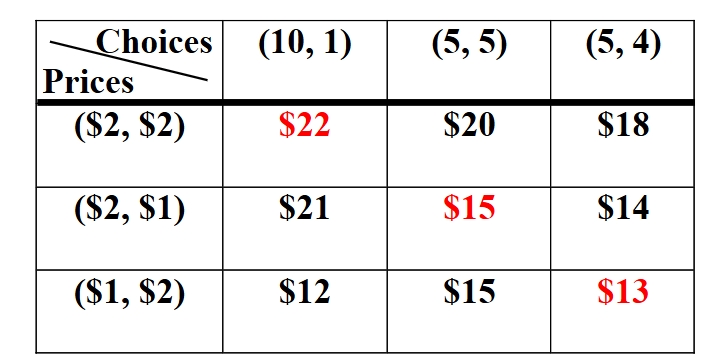
What violates WARP here?
This image violates WARP because we can conclude from the first row that (10,1) is directly revealed to be preferred to (5,5) and (5,4), the second row concludes that (5,5) is directly revealed to be preferred to (5,4), the third row concludes that (5,4) is directly revealed to be preferred to (10,1). (10,1) and (5,4) cannot both be directly revealed to be preferred to the other bundle.

What is the Strong Axion of Revealed Preference? (SARP)
When bundles are indirectly revealed to be preferred to the other according to transitivity, then they satisfy SARP.

What is true of SARP and WARP’s data?
Data that violates WARP will always violate SARP.
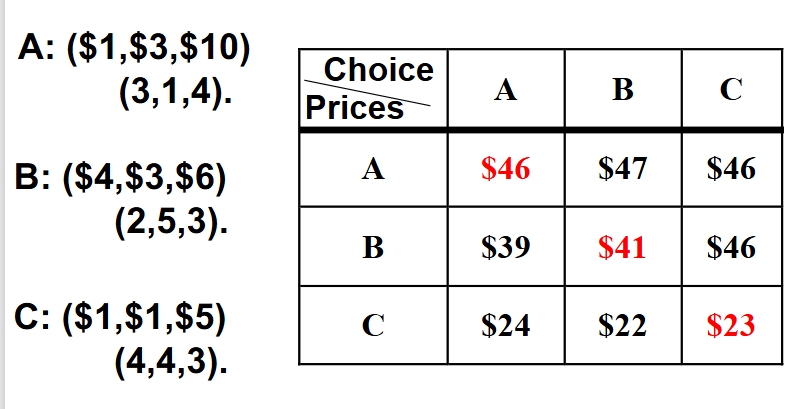
What violates SARP here?
A is directly revealed to be preferred to C in the top row. B is directly revealed to be preferred to A in the second row. C is direct revealed to be preferred to B in the third row. This violates transitivity because A>C, B>A, which implies that B>C, but that isn’t true of the third row. C> B implies that C> A, which is untrue because of the first row. C> B implies that A>B, which is untrue because of the second row.
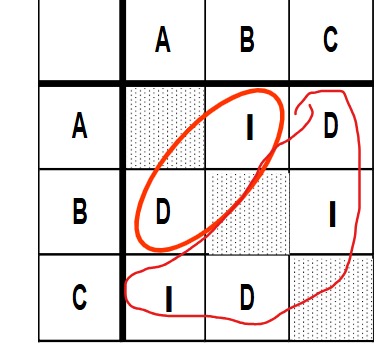
What is true of data that satisfies SARP?
SARP is necessary and sufficient condition for a preference relation that rationalizes the data (but isn’t necessarily irrational because it doesn’t satisfy SARP because of changes in preferences).
What is a quantity index?
A price weighted average of quantities demanded
What is the Laspeyres’ quantity index?
Base price of commodity 1 x current quantity of commodity 1+Base price of commodity 2 x current quantity of commodity 2)
over
Base price of commodity 1 x base quantity of commodity 1 + Base price of commodity 2 x base quantity of commodity 2
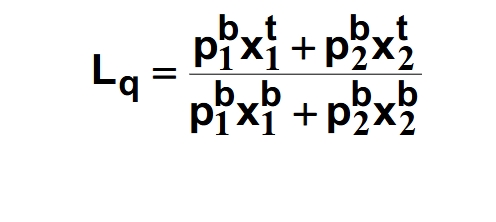
What is the Paasche’s quantity index?
Current price of commodity 1 x current quantity of commodity 1 + current price of commodity 2 x current quantity of commodity 2
over
Current price of commodity 1 x base quantity of commodity 1 + current price of commodity 2 x base quantity of commodity 2
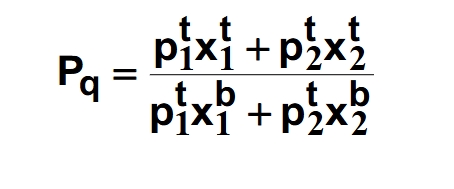
What happens when Laspeyres’ quantity index is less than 1?
This implies that consumers were better off in the base period than they were in the current period
What happens when the Paasche’s quantity index is greater than 1?
This implies that consumers were better off in the current period than they were in the base period.
What is the expenditure ratio?
Current price of commodity 1 x current quantity of commodity 1 + current price of commodity 2 x current quantity of commodity 2
over
Base price of commodity 1 x base quantity of commodity 1 + Base price of commodity 2 x base quantity of commodity 2

What is the Laspeyres ‘s price index?
Current price of commodity 1 x base quantity of commodity 1 + current price of commodity 2 x base quantity of commodity 2
over
Base price of commodity 1 x base quantity of commodity 1 + Base price of commodity 2 x base quantity of commodity 2
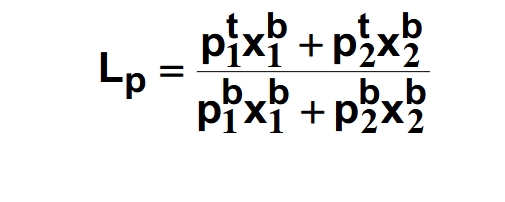
What is Paasche’s price index?
Current price of commodity 1 x current quantity of commodity 1 + current price of commodity 2 x current quantity of commodity 2
over
Base price of commodity 1 x current quantity of commodity 1+Base price of commodity 2 x current quantity of commodity 2)
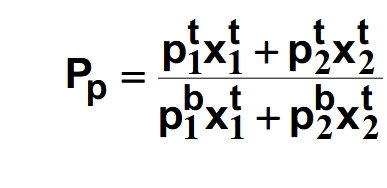
What happens when Laspeyres’ price index is less than the expenditure index (M)?
This implies that consumers are better off in the current period than in the base period.
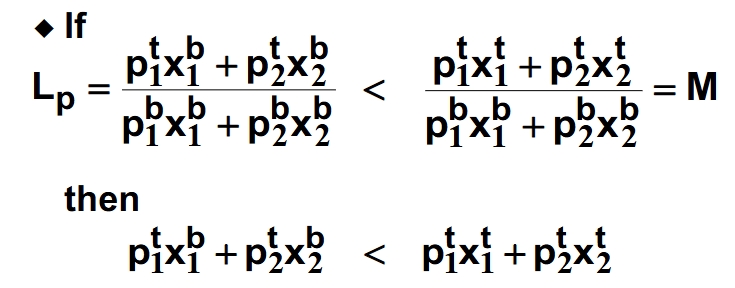
What happens when Paasche’s price index is greater than the expenditure ratio (M)?
This implies that consumers were better off in the base period.
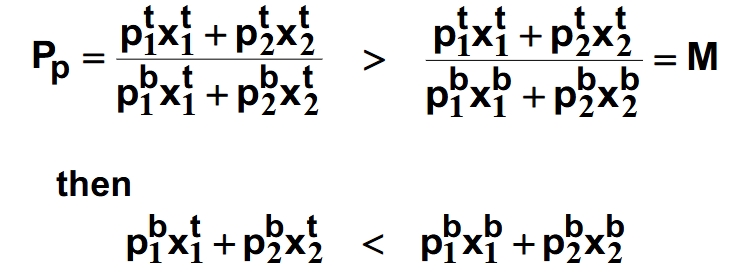
What is full indexation?
occurs when the wages or payments are increased at the same rate as the price index being used to measure aggregate inflation rate. (This effectively will cut benefits because the wages are balanced with the price index, so you aren’t better off in the current period- usually what happens when the current price index makes it so that way your wayy better off than how u were before.